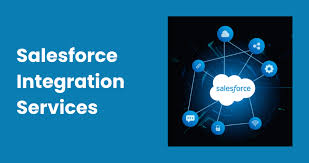Seattle’s business scene moves fast. Companies here are always upgrading their tech, and Salesforce integration isn’t just a buzzword anymore—it’s how teams get things done quicker and smarter. With the right Salesforce consultant or developer on your side, you can hook up Salesforce to your current tools, cut down on busywork, and actually make life easier for your customers.
Why Seattle Companies Count on Salesforce Integration
If you do business in Seattle, you know how much everyone relies on tech and automation. Most teams juggle a stack of apps every day. Salesforce really shines when you connect it with everything else—think ERP systems, marketing platforms, accounting software, customer service tools, even your own custom apps.
To pull that off without headaches, a lot of companies work with Seattle-based Salesforce consultants who get both the local business vibe and the bigger Salesforce picture.
What You Actually Get From Integrating Salesforce
- All Your Customer Data in One Place
No more hunting for details—everyone sees the same info, right when they need it.
- Better Teamwork
When your sales, support, and marketing systems talk to each other, your people do too.
- Less Manual Work
Cut out the spreadsheets and the copy-paste. Data moves on its own.
- Smarter, Faster Decisions
With real-time dashboards, leaders don’t have to guess what’s going on.
- Quicker Workflows
Integration clears out bottlenecks, so teams move faster every day.
Salesforce Integrations Seattle Businesses Use Most
- Salesforce + Accounting Tools: Connect QuickBooks, Xero, or NetSuite to keep your numbers in sync.
- Salesforce + Marketing Tools: Plug in HubSpot, Mailchimp, or Pardot to run better campaigns.
- Salesforce + Customer Support: Link up Zendesk or Freshdesk for smoother service.
- Salesforce + Custom Apps: Got something unique? A good Salesforce developer can build API integrations for your in-house systems.
What a Salesforce Consultant in Seattle Actually Does
A Seattle Salesforce consultant isn’t just a techie—they help you figure out what you need, design how it all fits together, keep your data safe, and stay with you for support. They plan things out so you go live faster and avoid nasty surprises.
Why You Want a Salesforce Developer in Seattle
Developers make the magic happen. They write the code, connect the APIs, and build automations using tools like Apex, MuleSoft, Boomi, or Zapier. If your setup is complex, you need someone who knows this stuff inside and out.
How to Pick the Right Salesforce Partner in Seattle
Look for experience with integration projects and people who really understand local business. Make sure they’re certified, know their way around APIs and middleware, and have a track record of making things work. The right partner keeps your project on track and sets you up for long-term wins.
The Bottom Line
In Seattle, seamless tech isn’t just nice to have—it’s how you stay ahead. With the right Salesforce consultants and developers, you can build integrations that actually make a difference for your team and your customers.
Don’t think of Salesforce integration as optional. It’s what keeps your business growing.
FAQs
- Why bother with Salesforce integration in Seattle?
Because it brings your data together, automates the boring stuff, and makes your whole operation run smoother. - Who should handle Salesforce integration?
A qualified Salesforce consultant or consulting partner in Seattle who knows the ropes. - How long does it take to integrate Salesforce?
Most projects wrap up in a few weeks to a couple of months, depending on how many systems you’re connecting. - Do I need a Salesforce developer?
Yes—especially if you want custom APIs, automation, or anything beyond the basics. - What tools do people use for Salesforce integrations?
MuleSoft, Boomi, Zapier, custom APIs, and Salesforce’s own connectors are all in the mix.




